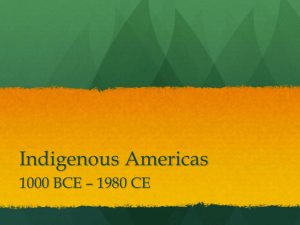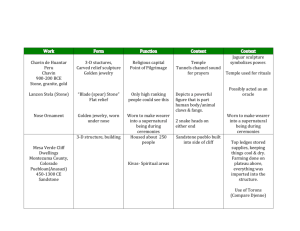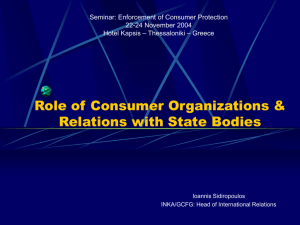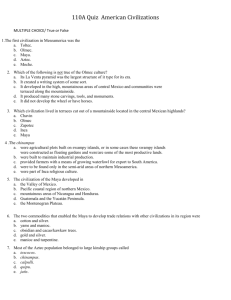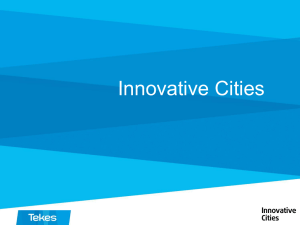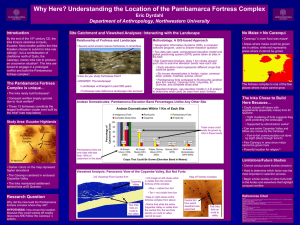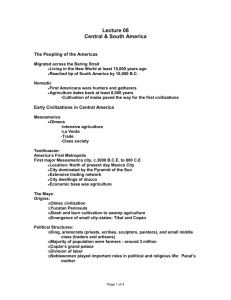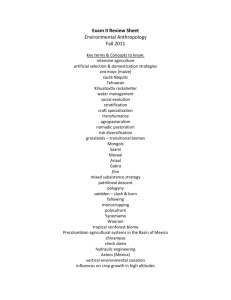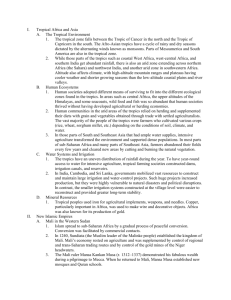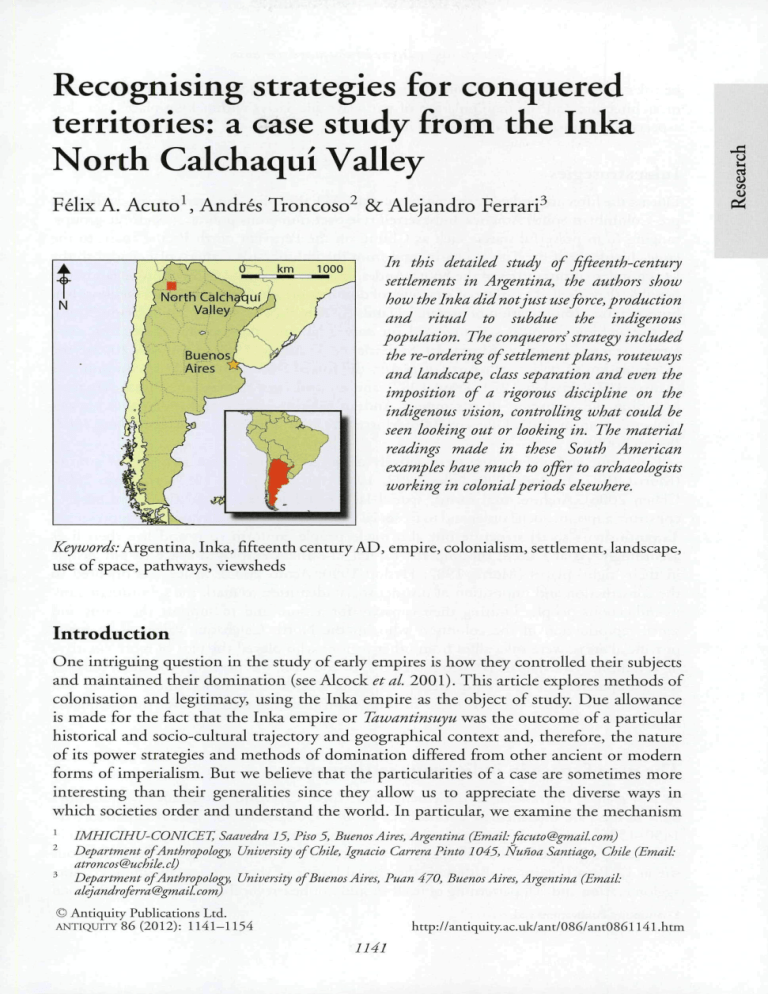
Recognising strategies for conquered
territories: a case study from the Inka
North Calchaqui Valley
Félix A. Acuto\ Andrés Troncoso^ & Alejandro Ferrari^
', km
1000
In this detailed study of fifieenth-century
settlements in Argentina, the authors show
how the Inka did notjust useforce, production
and ritual to subdue the indigenous
population. The conquerors' strategy included
the re-ordering of settlement plans, routeways
and landscape, class separation and even the
imposition of a rigorous discipline on the
indigenous vision, controlling what could be
seen looking out or looking in. The material
readings made in these South American
examples have much to offer to archaeologists
working in colonial periods elsewhere.
Keywords: Aigcnúna., Inka, fifteenth century AD, empire, colonialism, settlement, landscape,
use of space, pathways, viewsheds
Introduction
One intriguing question in the study of early empires is how they controlled theit subjects
and maintained their domination (see Alcock et al. 2001). This article explores methods of
colonisation and legitimacy, using the Inka empire as the object of study. Due allowance
is made for the fact that the Inka empire or Tawantinsuyu was the outcome of a particular
historical and socio-cultural trajectory and geographical context and, therefore, the nature
of its power strategies and methods of domination differed from other ancient or modern
forms of imperialism. But we believe that the particularities of a case are sometimes more
interesting than their generalities since they allow us to appreciate the diverse ways in
which societies order and understand the world. In particular, we examine the mechanism
'
^
^
IMHICIHU-CONICFT,
Saavedra 15, Piso 5, Buenos Aires, Argentina (Email; facuto@gmail.com)
Department of Anthropology, University of Chile, Ignacio Carrera Pinto 1045, Ñuñoa Santiago, Chile (Email;
atroncos@uchile. cl)
Department of Anthropology, University of Buenos Aires, Puan 470, Buenos Aires, Argentina (Fmail;
alejandroferra@gmail.com)
© Antiquity Publications Ltd.
ANTIQUITY 86 (2012): 1141-1154
hrtp://antiquity.ac.uk/ant/086/ant0861141 .htm
1141
Recognising strategies for conquered territories
of Inka rule over the North Calchaqui Valley (Figure 1), showing that the strategic use
of architecture and the manipulation of pathways and views within Inka places were key
aspects of Tawantinsuyu's domination in the region.
Inka strategies
During the fifteenth and early sixteenth centuries AD, the Inkas conquered a vast territory in
pre-Columbian South America and exerted rule over numerous polities and ethnic groups,
ranging from powerful states, such as Chimú on the Peruvian north Pacific coast, to the
large chiefdoms of the Titicaca basin, and from the indomitable Canaris of Ecuador to the
less complex communities of the South Andes. In order to control these multiple lands and
peoples, they applied a variety of strategies of domination which encompassed the thorough
bureaucratic administration of provincial lands (D'Altroy 2002; Covey 2008; Urton 2008),
an overarching financial system based on corvée labour, attached craft specialists, state
farms, storage facilities (Murra 1978; Earle & D'Altroy 1989; D'Altroy 2002), the
manipulation of native structures of power, the forced relocation of ethnic communities
(Murra 1978; Hyslop 1979; Pease 1982) and control over feasting and ritual activities,
including the co-option of paramount Andean pilgrim centres and indigenous shrines
(Bauer & Stanish 2001; Dillehay 2003; Morris & Covey 2003; Morris ÔC Santillana 2007;
Besom 2009).
Landscape and architecture were actively deployed in all of these strategies of control
(Morris 1987; Hyslop 1990; Niles 1992, 1999; van de Cuchte 1999; Troncoso 2004;
Coben 2006). Architectural forms, spatial layout and internal circulation were used to
construct a specific social order and to fix social relations. Inka spatiality not only represented
Tawantinsuyu's social structure but also made people conform to it and live their lives
accordingly. As at Cuzco, the imperial capital, the Inkas employed space to put people
in their 'right' places (Morris 1987; Hyslop 1990; Acuto 2005). Space was oriented to
the construction and imposition of distinct social identities: to mark the subordinate rank
of indigenous people, limiting their capacity for action, and to support the status and
social reproduction of the colonisers who, in the North Calchaqui Valley, as in many
provincial areas, were Inka allies from other regions who played the part of representatives
of Tawantinsuyu (Malpass &C Alconini 2010). In addition, we show that the Inkas pursued
the manipulation of bodily experiences to create a sense of inclusion and exclusion and
to theatrically display the new order of things and their intervention over the conquered
region.
The use of space in indigenous settlements
At first glance, the residential settlements that North Calchaqui indigenous communities
built in the Late Intermediate period (AD 1000-1450) and during Inka occupation (AD
1450—1536) appear as large agglomerates of stone structures (from 200 to more than 500 in
some cases) arranged in a cell-like pattern, as we can see from the example of the indigenous
site at La Paya (Figure 2). Although the spatial layout of these sites seems quite chaotic,
agglomeration and cell patterning of itself should not be irrevocably interpreted as the total
© Antiquity Publications Ltd.
1142
Eélix A. Acuto, Andrés Troncoso & Alejandro Eerrari
RIO LAS
i r ^ TRANCAS . '
CACHI
ADENTRO
MODERN
TOWNS
Figure 1. The North Catehaqui Valley, Argentina, showing the sites mentioned in the text: I) La Paya: 2) Guitián; 3)
Cortaderas Bajo; 4) Cortaderas Alto; 5) Cortaderas Izquierda; 6) Cortaderas Derecha.
© Antiquity Publications Ltd.
1143
Recognising strategies for conquered territories
Mound
0 Tombs
Main pathways
\ Structure access
Secondary pathways
Pathways between clusters
Walls
Mound
0 Tombs
Main pathways
Secondary pathways
Modern structure
Perimeter wall (modern surface)
Eigure 2. A) The North Calchaqui indigenous site oftLa Paya. B) Interior circulation within a cluster oftstructures.
absence of order. A closer look into these sites shows specific patterns of organisation (Acuto
et al. 2008). There are discrete clusters of structures, defined and divided by long and
wide artificial mounds and/or raised pathways. Principal passageways encircle these clusters,
connecting them and permitting access. The clusters themselves share similar buildings and
consttuction techniques. Inside each cluster thete are residential compounds (generally a
combination of a large, open multi-activity patio connected to two or three smaller rooms),
circular stone tombs and earth mounds. Buildings ate semi-subterranean and usually have
shared walls, halls and passages.
The residential compound was the North Calchaqui settlements' principal building block.
There is no evidence for administrative buildings or formal public spaces that might indicate
the existence of centralised political institutions. Storage took place at the household level.
These sites do not have central and formally designed plazas. They do, however, contain
several large patios in different areas of the settlement that may have served for communal
meetings or joint activities and work, as the concentration of grinding stones in some of
them seems to indicate. The presence of more than one open space suitable for large-scale
gatherings suggests that, within a single community, different groups, on different occasions,
might have convened and hosted particular events.
Surface collection and excavations have shown that there are no major differences
between these clusters in the artefacts theit residents employed or the goods they consumed.
For example, decorated and non-decorated ceramics are abundantly and homogeneously
distributed throughout these settlements and among clusters; and the same is true of
various instruments of production and domestic tools, such as spindle whorls, grinding
stones, cooking pots, lithic raw material and instruments, and basic resources for ceramic
manufacture (clay and pigments) (see Diaz 1978-84, 1981 ; Acuto et al. 2008). Moulds and
© Antiquity Publications Ltd.
1144
EélixA. Acuto, Andrés Troncoso & Alejandro Eerrari
ctucibles are frequently found within domestic compounds but there is no evidence for craft
specialisation, such as metallutgy workshops, and copper objects, such as pectotal plaques
and small instruments (especially chisels and tweezets), ate widely disttibuted (Acuto et aL
2011). The only unique item found in this region is a decorated btonze disc (230mm in
diameter) found in tomb 164 at La Paya. Camelid bones are also ubiquitous elements in
tesidential compounds, as well as containets for stotage, eithet specially prepared pits or
semi-buried ceramic vessels.
Burials do not show significant diffetences regarding offerings or tomb atchitecture. There
are no large tombs, ot tombs constructed with different architectural techniques or matetials
or presenting special assemblages of goods. All gtaves are marked by shallow, circular stone
structures. Burial location does not seem to have been used to undetpin social distinction. No
burial was placed in a special topogtaphic location ot in association with outstanding built
structures or natural featutes. On the contrary, every burial is eithet inside the setdement
and in connection with a domestic compound, or outside and tight next to the site. It is
intetesting to note that tombs exhibit the same building techniques and matetials employed
to construct domestic compounds and that the gteat majority of grave goods were everyday
domestic objects. Thus, the materiality of death was the materiality of daily domestic
life.
All this information demonsttates that the groups that resided in each clustet of structures
not only consumed and employed similat items, but wete also involved in the same type of
activities: textile ptoduction, manufacture and use of ceramic and lithic instruments, food
ptocessing, stotage and consumption, metallutgy, and burial practices.
Besides being places matked by material uniformity, indigenous settlements wete highly
articulated localities, with a comprehensive intetnal circulation. The elongated artificial
mounds and the taised passageways that ran between clusters of sttuctutes, together with
the lm-wide and lm-tall walls ofthe open, semi-subterranean patios, created an extensive
netwotk of paths that reached almost every corner ofthe town (Figute 2B). While the former
comprised primary ttails that allowed communication between clusters and pedesttian
circulation throughout the setdement, the lattet wete ancillary paths that facilitated access
to each cluster ftom various directions, as well as movement inside them. Although it is
difficult to establish whethet or not there were symbolic restrictions to circulation, thete
were certainly no material barriers.
The combination of semi-subtettanean architectute and raised pathways meant that a
person walking around a North Calchaqui town was almost never confined between walls
but overlooked enclosure interiors (Figure 3 shows a reconstruction dtawing ftom the
site of Tastil). Photogtaphs taken at the beginning ofthe twentieth century (Ambrosetti
1907) confitm that these internal ttails wete not consttained by high walls. Atound 85-90
pet cent of the built space belonged to large unroofed patios (Giffotd 2003: 242), whete
many activities were held, from cooking and food consumption to attefact production and
weaving, stotage and burial ofthe dead (Diaz 1978-84, 1981). Thetefore, every resident
was able to witness the activities of othet households, the goods they consumed, or the
rituals they performed. The atchitecture does not seem to be otiented towatds featutes of
the surrounding landscape, but while walking about the town people wete able to look in
almost any direction at the natural world outside the settlement.
© Antiquity Publications Ltd.
1145
j^
H
^
p^
Recognising strategiesfiorconquered territories
Figure 3. Perspective on internal circulation within an indigenous settlement; Tastilsite (drawing courtesy of Alicia Charré).
The architectural forms and spatial organisation of these North Calchaqui sites show no
evidence of social stratification, political centralisation or the existence of an institutionalised
ruling elite. On the contrary, the tesidents of North Calchaqui settlements experienced
within these places a profound sense of material homogeneity and spatial permeability.
The use of space in Inka centres
The indigenous people who visited Inka centres to participate in a special event, who allied
with the colonisers and lived in these settlements, who were forced to move into these
places, or who were required to work in activities hosted by the Inkas, confronted places
whose spatial, material and symbolic nature was dramatically different from that of North
Calchaqui towns. Inka localities exhibited and created a clear-cut segregation between the
realms of the colonisers and those of the colonised. In these places, homogeneity, similarity
and connectivity disappeared to be replaced by a material environment that promoted
estrangement and hierarchy.
Cortaderas, located in the north-east of the region, is a good example of this. The
settlement area consists of four main centres (Figure 4). Cortaderas Alto was a pre-Inka
stronghold or pukara strategically placed on the top of a hill, 250m above the riverbed
(Figure 5). This indigenous fortified enclave served to control one of the main routes into
the Calchaqui Valley from the north-east and was vacated when the Inkas conquered the
region (Gifford 2003: 329). Cortaderas Bajo, immediately below Cortaderas Alto, has a
© Antiquity Publications Ltd.
1146
Félix A. Acuto, Andrés Troncoso & Alejandro Ferrari
4. Cortaderas aerial perspective.
large plaza and several massive rectilinear Inka-style compounds. These administrative-type
buildings contained a number of storage facilities or qollca. The north area of Cortaderas
Bajo features large Inka residential compounds.
The most intriguing building at Cortaderas Bajo is the solid structure the Inkas
constructed on the crest of the low knoll to the south, encircled by a perimeter wall
that runs across the east, north and west slopes (Figure 6). Although archaeologists have
usually classified it as an Inka fortress (D'Altroy et al. 2000), we have recently begun
to revisit this interpretation and re-study this building, paying careful attention to its
design, masonry, wall preservation and amount of debris around it. Although this structure
might have first functioned as an Inka fortress, as the solid perimeter wall suggests, it was
later modified to become a ceremonial structure or ushnu. Ushnu were stone platformmounds connected with public spaces that served as thrones, places for rituals, libations and
sacrifices, and as stone altars (Zuidema 1989; Hyslop 1990). Ushnu were key features for
astronomical observations related to the agricultural calendar. As Staller explains, ushnu also
served for "the veneration of ancestors, and the channeling of fiuids to both sacred places
{huacas) and surrounding agricultural fields" (Staller 2008: 285). Through these structures,
and the knowledge to use them, the Inkas controlled calendric information and, during
public activities, established subjects' annual labour obligations toward the Inka empire
(Zuidema 1989; Villacorta 2003). Like ushnu in other parts of Tawantinsuyu, this massive
structure at Cortaderas Bajo is a stone platform. It has two small rectangular structures on
the top, too small to be rooms and more likely to be receptacles for libations. A similar
interpretation is suggested by Farrington and Zapata (2003) for an Inka site in the Cuzco
© Antiquity Publications Ltd.
1147
Recognising strategies for conquered territories
region. The main site here has a central
rectangular plaza with no evidence of an
ushnu, but to the west there is a round hill
that local people nowadays call Colina del
Ushnu. At its summit is a platform and
a variety of constructions on its east and
south slopes (among them stairs, canals,
and baths). The architecture in the plaza is
oriented towards the crest of this hill. The
authors argue that this modified natural
feature was actually an ushnu.
Cortaderas Izquierda, which lies on
the left bank of the Potrero River,
south from Cortaderas Bajo (Figure 5),
contains more than 50 Inka buildings, most
notably a group of circular storage rooms
and a large compound (approximately
130 X 35m) with 20 rectangular enclosures
arrayed in a double row; a typical stateoriented building found in other Inka sites
throughout the Andes.
Finally, on the right bank of the Potrero
River, 1km south-west from Cortaderas
Bajo, lies a small local village we call
0
100m
Cortaderas Derecha. According to our
Figure 5. Cortaderas Alto and Bajo (after D'Altroy et al.
studies
and excavations, this village was
2000:flg5).
established during the Inka period. We
have argued that the Inkas resettled
Residential area
in this place a group of local people
who were permanently attached to Inka
projects and activities. The enormous
amount of camelid bones recovered
80m
during the excavation of Cortaderas
Derechas' middens, and grinding stones
and stone shovels recovered from this site's
surface, clearly show that crop-processing
and camelid husbandry and butchering
were major and intensive activities here
Fortress / Ushnu
(Acuto 2004: 212). The smaller domestic
compounds
and large middens in the local
Figure 6. Plan of Cortaderas Bajo, showing the probable
ushnu.
area of this settlement provide a contrast
to the well-constructed administrative
buildings, spacious residential compounds, formal public spaces, storage facilities and
monumental ritual structures encountered at Cortaderas Bajo and Cortaderas Izquierda.
© Antiquity Publications Ltd.
1148
Eélix A. Acuto, Andrés Troncoso & Alejandro Eerrari
Thete was, therefore, a well-defined demarcation between the ritual-administrative spaces
of the Inkas, on the one hand, and indigenous work-areas and residences, on the other.
Archaeological evidence indicates that the Inkas promoted diffetent social practices in each
part of Cortaderas. Rulers connected themselves with new ritual practices, materialised
in the ample public space and ushnu of Cortaderas Bajo. The concentration of storage
facilities in Cortaderas Bajo and Cortaderas Izquierda suggests that Inka representatives also
held administrative duties and controlled the goods produced in Cortaderas, and perhaps
in othet parts of the region. Moreover, the imperial delegates seem to have monopolised
military activities, as the destruction of the indigenous pukara of Cortadetas Alto and the
construction of an Inka fortification in Cortadetas Bajo indicate. On the othet hand, those
indigenous individuals who resided in Cortaderas Derecha, not only found themselves
stripped of military power and alienated from the goods they produced, but they wete
also relegated to simpler and lower-prestige tasks, such as staple production and foodprocessing.
Restructuring the landscape
At Cortaderas, the river served to demarcate the separation between physical places and
social realms (Figure 4). This division was instrumental in the creation of a novel sense
of place and the constitution of new identities for those who inhabited or visited this
locality. Cortaderas' spatial order produced and reproduced two alienated social spheres and
identities: those of the Inkas and those of the subjugated others, conquerors vfríMí conquered,
elite versus commoners, imperial versus colonial, sacred versus profane. In summary, the sense
of homogeneity and telatedness experienced in local settlements disappeared within this Inka
centre, replaced by social distance and distinction.
In the area of La Paya in the middle part of the North Calchaqui Valley, Inka intervention
also changed the natute and sense of place and, henceforth, indigenous experience of the
landscape (Figure 7). Less than 400m across the river from La Paya, a major indigenous town
(see Figure 2), the Inkas placed the small but very interesting site of Cuitián. This comprised
four large Inka residential compounds and a classic Inka administrative building or kallanka
adjoining a square plaza with an ushnu platfotm (Figure 8). The east side of the site, away
from the public space, includes a group of indigenous residential compounds. There is
mote indigenous domestic architecture right outside Cuitián's perimeter wall, and beyond a
natutal ditch, towards the west and south-west (Figute 7, no. 2). Recent excavations in the
ushnu and the plaza yielded evidence of feasting and offerings. We found inside this ushnu
a small, semi-circular stone structure, probably a receptacle for libations, and fragments of
ceramic vessels and camelid bones deposited in small pits. In addition, a latge midden pit
full of camelid bones and fragments of Inka, local and non-decorated ceramic containers
was discovered inside Guitián's plaza. Excavations in a local domestic compound yielded a
large hearth, a significant amount of corn kernels and fragments of cooking pots and Inka
storage jars or aryballoi, that suggest that its residents engaged in corn beer {chicha) brewing
and storing. Based on Cuitián's layout, atchitecture and the results of our excavations at the
site, we propose that Guitián's main function was ceremonial.
© Antiquity Publications Ltd.
1149
JH
^
2o
p^
Recognising strategies for conquered territories
Figure 7. The landscape at La Paya: I) site ofithe indigenous town. La Paya (fior a plan see Figure 2); 2) unmapped local
residential compounds outside Guitián's perimeter wall; 3) Guitián.
If La Paya offeted its residents
and visitots a highly integrated and
Controiied viewing angies from Guitián's plaza
matetially homogenous built environment,
the addition of Guitián into La Paya's
envitonment meant that connection became fragmentation, homogeneity became
diffetence, and domestic and pedesttian
became ceremonial. The spatial sense of
La Paya now included a new sectot across
the river with novel foreign buildings and
a formalised public space. This new sectot,
secluded behind a massive perimeter wall,
was fully oriented to ceremonial activities.
The Inkas sttategically used topography
and the built environment to sepatate and
50m
differentiate the realm of the colonisets
Figure 8. Guitián site: 1) ushnu; 2) plaza; 3) kallanka; 4)
from that of the subjects, and titual
Inka-style residential compounds; 5) local architecture (afrer
from mundane. This same scheme was
D'Attroy et al. 2000: fig 6).
reproduced inside Guitián itself whete,
once again, rulers and subjects wete apart from each othet; the former were in direct
association with the public space and ritual and administtative structutes, while the lattet
resided in typical native domestic compounds, on the periphery ofthe settlement or outside
its perimeter wall.
> Access to Guitián's plaza from outside the site
© Antiquity Publications Ltd.
1150
EélixA. Acuto, Andrés Troncoso drAlejandro Eerrari
Controlling pathw^ays and vision
The study of Cortaderas' internal pathways showed that circulation within this Inka
settlement did not allow a direct and unrestricted access from the indigenous to the Inka area;
or from the domestic compounds of Cortaderas Derecha to the ritual spaces of Cortaderas
Bajo. Even though Inka roads connected all four Cortaderas' sectors, topography and the
Potrero River kept these areas apart. Distance and the irregularities of the terrain limited
visual access to the imperial precincts of the site from the indigenous residential area.
Probably, Cortaderas Alto was vacated not only for defensive reasons, but also to avoid
intrusive views into the Inka ptecinct.
Once inside Cortaderas Bajo, circulation was limited to the Inka road, the only formal
pathway in and out of this Inka section of the site. The road crossed Cortaderas Bajo
from south to north. As seen in Figure 6, there were definite doors allowing entrance to
Cortaderas Bajo's buildings from the road. There is one unique door in and out of AD 1 and
AD 2, as well as just one way to enter the residential area of Cortaderas Bajo. Tall walls and
roofed structures constrained visual access. Architectural analysis and excavations indicate
that, except fot courtyards, the plaza, and possibly the platfotm/fortress, every building in
Cortaderas Bajo was roofed (Gifford 2003). Contrary to local settlements, in Inka centres
people did not move above buildings but within high-walled paths. In other words, it was
impossible from the Inka road to look inside Cortaderas Bajo's enclosures to see what Inka
life was like.
Although Inka architecture did not allow people to look inside houses, their views within
Inka settlements were directed towards specific features. Scholars have widely discussed the
choreographic character of Inka sites (see, among others, Hyslop 1990; Niles 1992; Bauer
&L Stanish 2001; Kaulicke et al. 2003; Cohen 2006), and Cortaderas was no exception
to this pattern. Natives visiting Cortaderas in order to participate in public events in
Cortaderas Bajo's plaza arrived in this settlement from the south. Once inside the plaza,
people confronted a contrasting picture. Whereas towatd the west lay the abandoned preInka stronghold of Cortaderas Alto, in the opposite direction people saw the former Inka
fortress transformed into a monumental ritual platform or ushnu, a construction previously
unknown in the region (Figure 9). This would have constituted a startling spectacle
for the North Calchaquies who simultaneously faced a symbol of conquest and defeat
and the representation of the new order of things. The counterpoint between the new Inka
(onresslushnu and the abandoned indigenous fortified enclave acted as a powerflil narrative
of conquest and colonisation and a clear representation of the previous order having been
suppressed and removed by Inka rule. During ceremonies, the ushnu platform, where rituals
were performed, was the main focus of attention. People gathering in the plaza below faced
this massive stone platform, turning their backs to the loca.1 pukara. The disposition of the
bodies within this public space—geared towards the Inka sphere and leaving behind
the local past—would have been a strong metaphor for the new colonial context. In brief,
once inside this plaza, topography and the built environment offered a stark reminder of
the differences between the old and the new in the North Calchaqui Valley.
Guitián provides another graphic example of control over circulation and vision (Figure 8).
While Inka houses had direct gates to the plaza, external visitors who came to participate in
© Antiquity Publications Ltd.
1151
Recognising strategiesfiorconquered territo
Figure 9. Cortaderas Bajo showing reconstructed views ftom Cortaderas Bajo's pUzu.
a public event had indirect and defined ways to reach Guitián's plaza. Only three entrances
granted access to Guitián. Once inside, people approached the plaza by walking between
buildings that, like funnels, channelled people's circulation towards the plaza's three public
doors. These were not elevated pathways between semi-subterranean buildings that allowed
one to watch the interior spaces of the residential compounds. On the contrary, with every
step towards the plaza people were wrapped by tall walls and narrow corridors that restrained
their movements and vision.
Guitián's plaza was quite a secluded place. Here individuals found themselves encircled
by Inka buildings and walls, unable to look beyond them. However, sticking out from
behind the tall walls of the Inka kallanka, was the snowy peak of Cerro Melendez, a main
local wak'a or sacred landmark seized by the Inkas, who built a sanctuary on its summit, at
6l50masl. Thus, the only feature outside this plaza that people were able to see evoked Inka
domination over the vernacular sacred geography.
Conclusion
In summary, inside indigenous sites an extensive network of raised passageways and wide
and low walls granted access to almost every area of the settlement, and roofiess patios
allowed neighbours to look inside each other's homes. But within Inka centres, distance
and natural features kept rulers and subjects apart. For those locals who visited Inka places,
once inside the imperial space, movement was precisely channelled, and visual and physical
access to Inka enclosures was restricted by tall walls and few and asymmetrically located
doors. Inka scenography re-oriented views, instead, to special natural features or structures
that supported narratives of power and control.
As in Cuzco and other regions of Tawantinsuyu, the imperial rulers used space to create
a sense of membership and exclusion, highlighting differences in power and hierarchy
between Inkas and locals; differences that were reflected in the spaces each group occupied,
the activities they carried out, the goods they consumed and the knowledge they acquired.
Moreover, within Inka places, privacy was secured and people's movements and views
restricted and directed. The Inkas framed the landscape to create a dynamic representation
of the new order of things in the region.
© Antiquity Publications Ltd.
1152
Eélix A. Acuto, Andrés Troncoso & Alejandro Eerrari
Our examples show that the Inkas actively engaged space, circulation and views in the
process of domination (see also Niles 1999; Bauer & Stanish 2001; Kaulicke et al 2003;
Coben 2006). Inside imperial places, the colonisers were able to simultaneously enhance
their position and constrain subjects' social reproduction by limiting their access to space
or, more importantly, by restraining their possibilities of establishing and reproducing their
social relations and meanings in the way they did in their own villages and towns. Local
peoples' actual encounter with the materiality of Inka places delivered a blunt confrontation
with the new social and political order in the region, something that would not have been
possible through discursive practices or symbolic exchanges alone.
Acknowledgements
Tbis investigation bas been financed by a Heinz Grant for Latin American Atcbaeology and a Wennet-Gren
Foundation Intetnational Collaborative Research Grant. We would like to tbank Terry D'Altroy for bis constant
support for our project.
COBEN, L.S. 2006. Other Cuzcos: replicated theaters of
Inka power, in T. Inomata & L.S. Coben (ed.)
Archaeology of performance: 223—59. Lanham
(MD): AltaMira.
References
ACUTO, F.A. 2004. Landscapes of ideology and
inequality: experiencing Inka domination.
Unpublished PhD dissertation, State University of
New York, Binghamton.
— 2005. The materiality of Inka domination: landscape,
spectacle, memory, and ancestors, in P.P. Funari, A.
Zarankin & E. Stovel (ed.) Global archaeology
theory: contextual voices and contemporary thoughts:
211-35. New York: Kluwer Academic/Plenum.
COVEY, R.A. 2008. The Inca empire, in H. Silverman
& W.H. Isbell (ed.) Handbook of South American
archaeology: 809-30. New York: Springer.
D'ALTROY, T.N. 2002. The Incas. Oxford: Blackwell.
D'ALTROY, T.N., A.M. LORANDI, V. WILLLWVIS, M .
CALDERARI, C . HASTORF, E . DEMARRAIS & M.
HAGSTRUM. 2000. Inka rule in the Notthetn
Calchaquí Valley, Argentina. Journal ofField
Archaeology 27: 1-26.
ACUTO, F.A., C. AMUEDO, M . KERGARAVAT, A. FERRARI,
L. GAMARRA & A.L. GoLDÍN. 2008. Experiencias
subjetivas en las aldeas prehispánicas del Valle
Calchaquí Norte, in L.A. Botrero & N.V. Franco
(ed.) Arqueología del extremo sur del continente
americano. Resultados de nuevos proyectos: 11—54.
Buenos Aires: IMHICIHU-CONICET.
ACUTO, F.A., M. KERGARAVAT & C. AMUEDO. 2011.
Experiencia de la muerte y la teptesentación de las
personas en las prácticas funerarias del Valle
Calchaquí Norte. Comechingonia, Revista de
Antropología 14: 23-54.
ALCOCK, S., C . SINOPOLI, T . N . DALTROY & K.
DIAZ, P.P. 1978-84. Diario de la excavación realizada en
el sitio Tero SSalCac 14. Unpublished report
prepared for Museo Arqueológico de Cachi, Cachi.
— 1981. Diario de excavación realizada en el sitio La
Paya SSalCac 1. Unpublished report prepared for
Museo Arqueológico de Cachi, Cachi.
DiLLEHAY, T.D. 2003. El colonialismo Inka, el consumo
de chicha y los festines desde una perspectiva de
banquetes políticos. Boletín de Arqueología PUCP 7:
355-63.
MORRISON (ed.). 2001. Empires: perspectives ftom
EARLE, T.K. & T.N. D'ALTROY. 1989. The political
archaeology and history. Cambridge & New York:
economy of the Inka empite: the archaeology of
Cambridge University Press.
power and finance, in C. Lamberg-Karlovsky (ed.)
Archaeological thought in America: 183—204.
AMBROSETTI, J.B. 1907. Exploraciones arqueológicas en la
Cambridge: Cambridge University Press.
ciudad prehistórica de La Paya. Buenos Aites:
Facultad de Filosofía y Lettas.
FARRINGTON, I. & J. ZAPATA. 2003. Nuevos cánones de
arquitectura inka: investigaciones en el sitio de
BAUER, B. & C. STANISH. 2001. Ritual and pilgrimage
Tambokancha-Tumibamba, Jaquijahuana, Cuzco.
in the ancient Andes. The islands of the Sun and the
Boletín de Arqueología PUCP 7: 57-77.
Moon. Austin: University of Texas Ptess.
GlFFORD, C. 2003. Local matters: encountering the
BESOM, J.T. 2009. Of summits and sacriflces. An
imperial Inkas in the South Andes. Unpublished
ethnohistoric study of Inka religious practices. Austin:
PhD dissertation, Columbia University.
Univetsity of Texas Press.
© Antiquity Publications Ltd.
1153
Recognising strategies for conquered territories
HYSLOP, J. 1979. El área Lupaca bajo el dominio
incaico. Un reconocimiento atqueológico. Histórica
3(1): 53-82.
— 1990. Inka settlement planning. Austin: University of
Texas Press.
KAULICKE, P , R. KONDO, T. KUSUDA & J . ZAPATA.
2003. Agua, ancestros y arqueología del paisaje.
Boletín de Arqueologia PUCP 7: 27-56.
MALPASS, M.A. & S. ALCONINL 2010. Provincial Inka
studies in the twenty-first century, in M.A. Malpass
& S. Alconini (ed.) Distant provinces in the Inka
empire: 1—13. Iowa City: University of Iowa Press.
MORRIS, C . 1987. Arquitectura y estructura del espacio
en Huánuco Pampa. Cuadernos Instituto Nacional
de Antropología 12: 27—45.
MORRIS, C . & R.A. COVEY. 2003. La plaza central de
Huánuco Pampa: espacio y transformación. Boletín
de Arqueologia PUCP 1: 1 3 3 ^ 9 .
MORRIS, C . SÍ J.I. SANTILLANA. 2007. The Inka
ttansformation of the Chincha capital, in R.L.
Burger, C. Morris & R. Matos (ed.) Variations in
the expression oftlnkapower. 135—63. Washington,
D . C : Dumbarton Oaks Research Library and
Collection.
MuRRA, J. 1978. La organización económica del Estado
Inca. Buenos Aires: Siglo XXI.
NiLES, S. 1992. Inca architecture and sacred landscape,
in R. Townsend (ed.) The ancient Americas: art from
sacred landscapes: 346—57. Chicago (IL): The Art
Institute of Chicago.
- 1999. The shape oftInca history. Narrative and
architecture in an Andean empire. Iowa City:
University of Iowa Press.
PEASE, F. 1982. The formation of Tawantinsuyu:
mechanisms of colonization and relationship with
ethnic groups, in C.A. Collier, R.I. Rosaldo & J.D.
Wirth (ed.) The Inca and Aztec states, 1400-1800:
173-98. New York: Academic Press.
STALLER, J.E. 2008. Dimensions of place: the
significance of centers for the development of
Andean civilization: an exploration of the ushnu
concept, in J. E. Staller (ed.) Pre-Columbian
landscapes oftcreation and origin: 269—314. New
York: Springer.
TRONCOSO, A. 2004. El arte de la dominación: arte
rupestre y paisaje durante el período incaico en la
cuenca superior del río Aconcagua. Chungará,
Revista de Antropología Chilena 36: 553-61.
URTON, C . 2008. The Inca khipu: knocted-cord record
keeping in the Andes, in H. Silvetman & W.H.
Isbell (ed.) Handbook oftSouth American archaeology:
831-44. New York: Springer.
VAN DE CUCHTE, M. 1999. The Inca cognition of
landscape: archaeology, ethnohistory, and the
aesthetic of alterity, in W. Ashmore & B. Knapp
(ed.) The archaeologies oftlandscapes: contemporary
perspectives: 149-68. Oxford: Blackwell.
ViLLACORTA, L.R 2003. Palacios y ushnus: curacas del
Rimac y gobierno inca en la costa central. Boletín de
Arqueología PUCP 7: 151-87.
ZuiDEMA, R.T. 1989. El ushnu, in M. Burga (ed.) Reyes
y guerreros: 402-54. Lima: FOMCIENCIAS.
Received: 11 November 2011 ; Accepted: 18 March 2012; Revised: 10April2012
) Antiquity Publications Ltd.
1154
Copyright of Antiquity is the property of Antiquity and its content may not be copied or emailed to multiple
sites or posted to a listserv without the copyright holder's express written permission. However, users may print,
download, or email articles for individual use.

